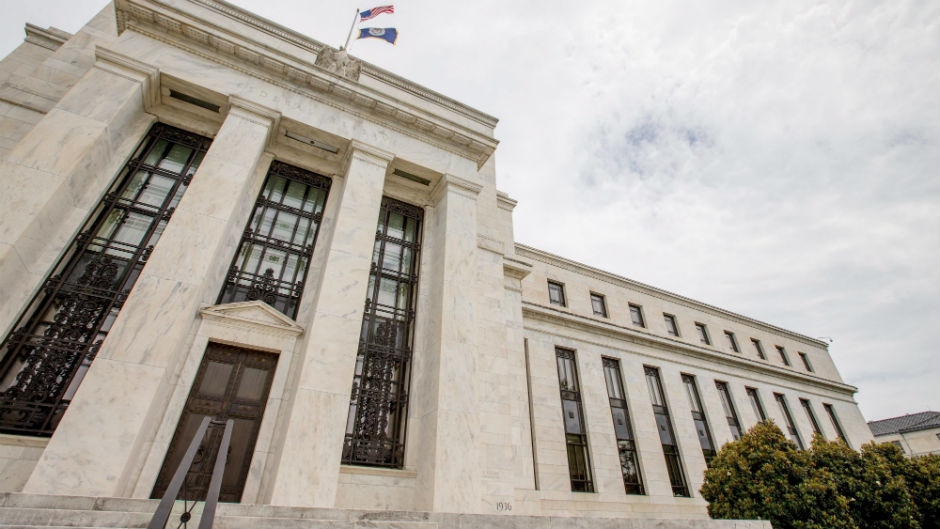Mar 16, 2017
'Hard for us to get bulled up': Loonie’s post-Fed surge met with skepticism
, Reuters

LONDON - World stock indexes surged to record highs on Thursday while the U.S. dollar traded close to a one-month low after the Federal Reserve hiked U.S. interest rates but signaled no pick-up in the pace of tightening.
Meanwhile, the Canadian dollar ended the day at 74.92 cents US, down 0.23 of a cent from Wednesday's close. The loonie got a bump after the Fed’ raised borrowing costs, coming with a more dovish tone than some market participants anticipated. The loonie reached a high of 75.32 cents U.S. in early trading Thursday, marking its highest level February 28.
“It’s hard for us to really get bulled up on the Canadian dollar at this point,” said Bipan Rai, Senior Macro Strategist at CIBC Capital Markets, in an interview with BNN. “There’s simply too many unknowns and a lot of uncertainty for the Bank of Canada ahead to really suggest that we should go long the Canadian dollar.”
Markets also reacted positively after Dutch center-right Prime Minister Mark Rutte fought off a challenge by anti-immigration, anti-European Union rival Geert Wilders to score an election win seen as a victory against populist nationalism.
The result, along with the Fed statement, handed the euro its biggest one-day jump in nine months, with the single currency climbing above $1.07 for the first time since early February late on Wednesday and staying above that level, though a touch down on the day, in European trade on Thursday.
The MSCI world equity index, which tracks shares in 46 countries, jumped 0.7 per cent on the day to reach an all-time high after the Fed lifted its funds rate by 25 basis points, but said further increases would only be "gradual".
Yields on 10-year U.S. Treasuries nursed their heaviest falls since last August.
"It was a well-prepared hike, and when you consider the fact that Yellen and Co kept the outlook for growth and inflation largely unchanged, I would call this a dovish hike," said DZ Bank analyst Rene Albrecht, in Frankfurt.
As yields recovered a little on Thursday, currency traders bought back cautiously into the dollar, with its basket index - which measures it against six major peers -- slightly above the one-month low it had hit in the immediate aftermath of the Fed but still down on the day.
Mark McCormick, North American head of FX strategy at TD Securities, joins BNN's Catherine Murray for a look at why the loonie has spiked after the Fed's decision to raise its benchmark rate by 0.25 basis points in March.
RELIEF
Across emerging markets, where investors had been concerned about faster U.S. hikes and more political upheaval in Europe, MSCI's sector equity index jumped nearly 2 per cent -- the biggest daily gain since last July.
Futures for the S&P 500 pointed to a strong opening on Wall Street.
European shares also rallied, with the pan-European STOXX 600 index climbing half a percent to its highest level since December 2015 on relief over the Fed's cautious tone, as well as the Dutch election result.
That helped Amsterdam's AEX stock index climb to its highest level in more than nine years, while both Germany's DAX and France's CAC 40 hit their highest levels since mid-2015 as fears eased that the euro zone was heading inexorably towards a break-up.
"Some of that fear around Brexit, Trump, and then Wilders and Le Pen, may now be seeping out of the markets - you see some of that fear dissipating," said Arne Petimezas, analyst at AFS Group in Amsterdam, referring to far-right French presidential Marine Le Pen.
Gold, copper and oil all rallied on the weaker dollar. MSCI's broadest index of Asia-Pacific shares outside Japan jumped 1.2 per cent to its highest level since mid-2015.
Crucially, Fed officials stuck to their outlook for two more hikes this year and three more in 2018, when many had expected an accelerated spate of moves.
Rather, the Fed said its inflation target was "symmetric," indicating that after a decade of below-target inflation it could tolerate a quicker pace of price rises.
A protracted bout of weakness for the U.S. dollar would be seen as positive for commodities priced in the currency, said Richard Franulovich, a forex analyst at Westpac.
Spot gold hit a 10-day high of $1,228.81 an ounce, after enjoying its biggest daily jump since September.
U.S. crude futures rose 39 cents to $49.25 per barrel, adding to a 2.4 percent gain on Wednesday. Brent firmed 47 cents to $52.28, after rising more than a dollar overnight.
-- With files from BNN
WEIGH IN
